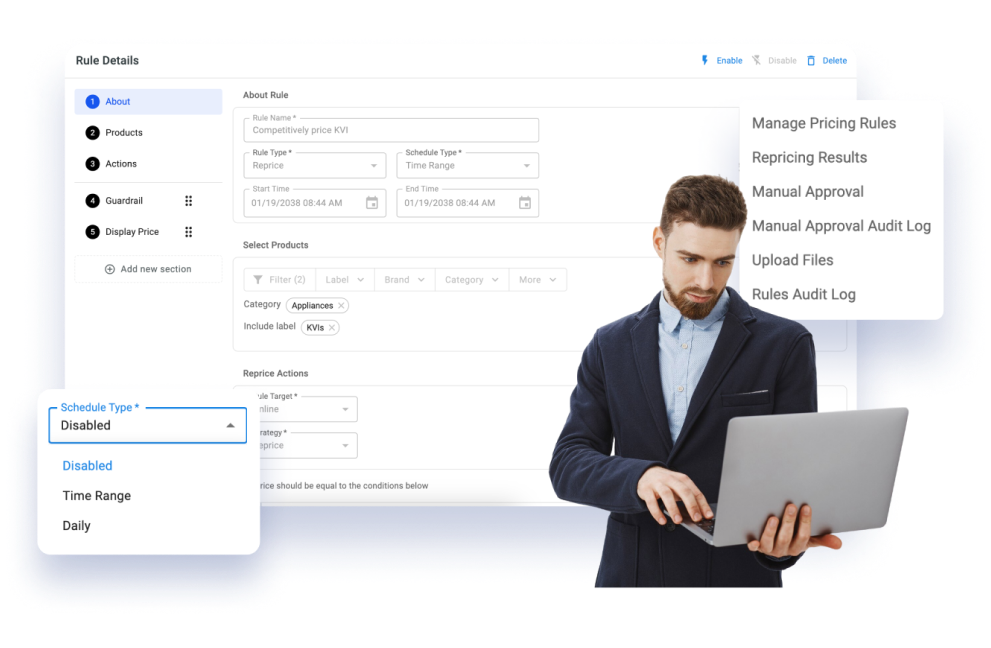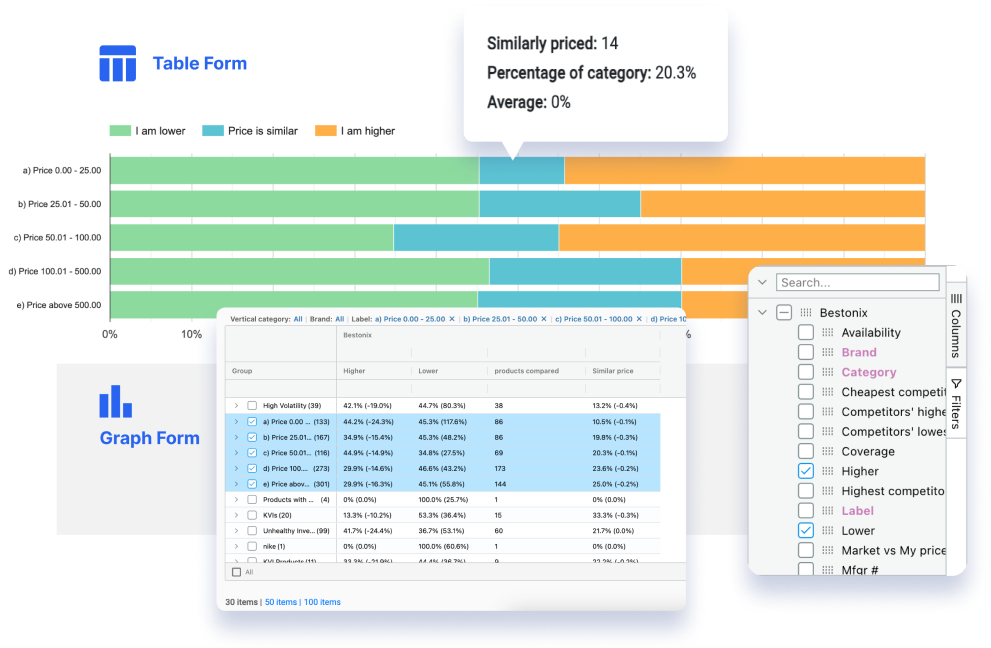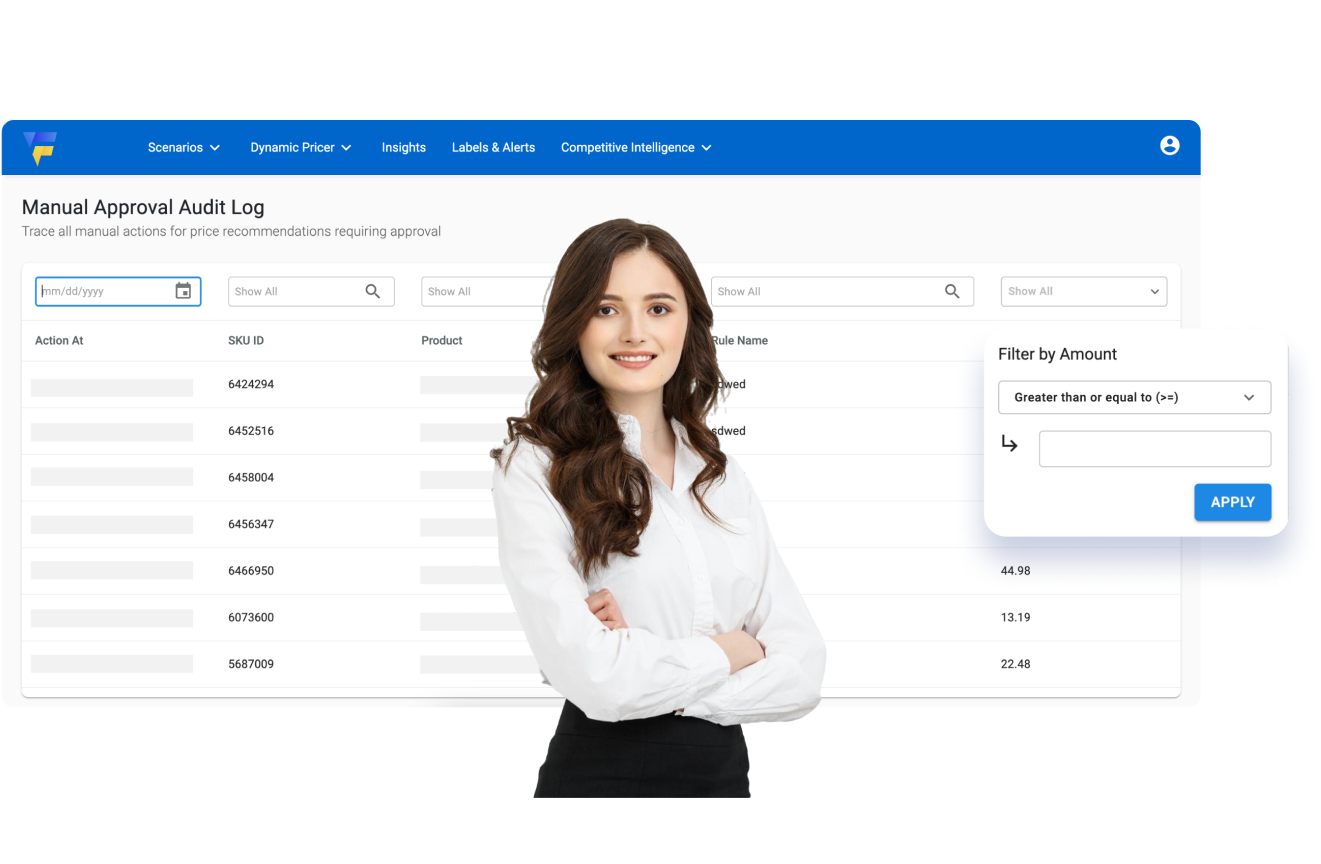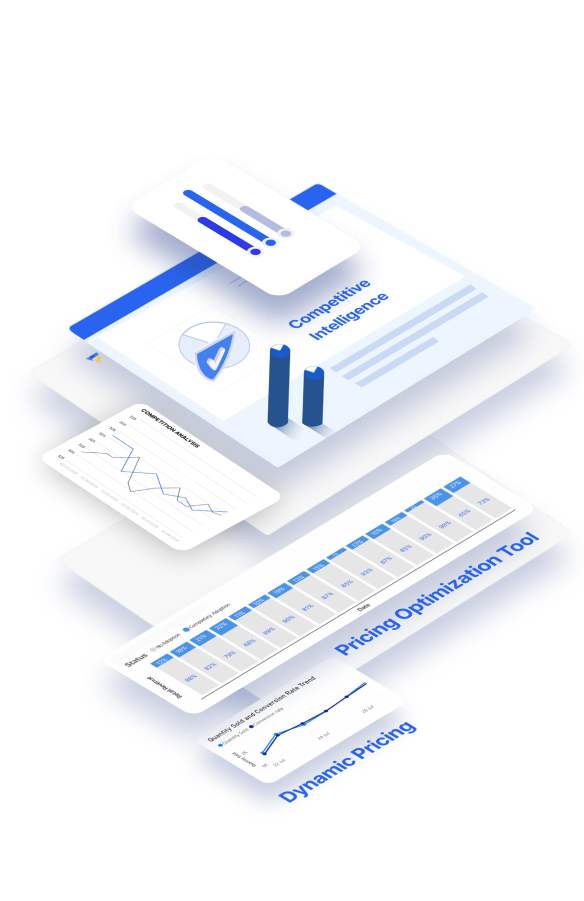PRICING MANAGER
Explore our comprehensive pricing suite
END-TO-END RETAIL SUITE
Explore our suite of cutting-edge retail solutions
FAQ
Dynamic pricing software helps businesses adjust product prices in real time based on competitor data, market conditions, demand trends, and internal goals. It ensures faster, more accurate pricing decisions to improve margins and stay competitive.
Dynamic pricing software like the one provided by FCC uses rule-based automation and machine learning to evaluate market signals and competitor pricing. It then automatically adjusts prices for millions of SKUs within seconds, following predefined rules and goals.
A dynamic pricing engine is the core technology that drives automated repricing. It processes data inputs, applies business rules, monitors changes, and adjusts prices in real-time across products while ensuring consistent and secure pricing workflows.
Dynamic pricing tools offer increased GMV, faster repricing, and high-volume price changes. They provide centralized pricing visibility, flexible rule creation, and elimination of pricing errors.
E-commerce businesses can respond faster to market changes, optimize prices across SKUs, and reduce operational workload. Dynamic pricing helps maximize revenue and maintain a competitive edge across fast-moving product categories.
Dynamic pricing software benefits retail and e-commerce businesses, particularly industries with volatile prices and high competition.
Yes, FCC Dynamic Pricing Software integrates smoothly with commerce platforms and internal systems. Businesses can deploy it quickly, streamline operations, and manage price updates without disrupting existing workflows or data ecosystems.
It allows businesses to automate millions of price changes per hour with centralized control and minimal manual effort. This supports rapid growth, reduces pricing bottlenecks, and enables efficient expansion across categories or regions.
Look for features like real-time pricing automation, rule-based controls, product-level simulations, guardrail settings, centralized dashboards, approval workflows, anomaly detection, and integration capabilities. These functionalities will help ensure accurate, scalable, and secure pricing execution.




















